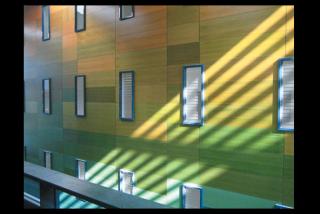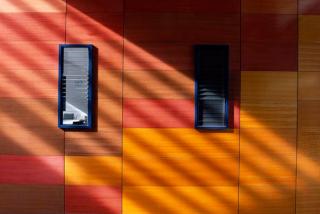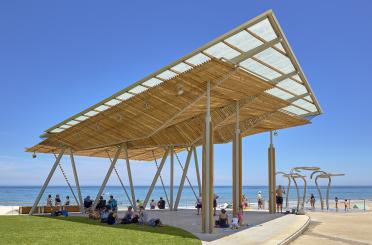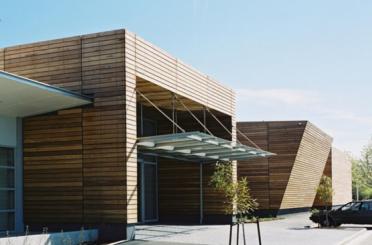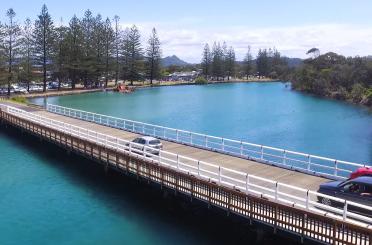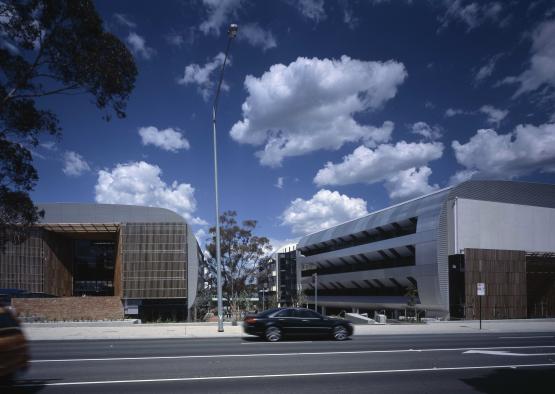
Overview
The first structures at Deakin University's Elgar Road site in Burwood, the ICBB consists of parallel low-rise, large floor plate buildings joined by a bridge and accessed from a central pedestrian 'street'. Cafes, lecture theatre, foyers and reception areas create a dynamic street environment with universal access at the ground plane.
The brief required practical and flexible accommodation of the university's needs now and into the future, and the result is a distinctive and contemporary curved form.
The design incorporates a strong environmental commitment, with sheltered atriums enlivened by textured recycled brick walls and light courts edged with graduated 'seasonal' coloured timber-panelled walls - providing the sustainable lungs for fresh air to the complex.
The north building is the International Centre and the south is the Business Building.
Story and pictures by special arrangement with timber+DESIGN International magazine.
Structure
Completed in 2008, the ICBB buildings were the first iconic gateway buildings at Deakin's Elgar Road campus - both with large, sustainable and flexible floor plates to allow for reinterpretation to the widest range of uses as educational needs change.
The project comprises twin, low-rise buildings joined at the first floor, and accessed from a central pedestrian street connecting Elgar Road to a future bridge link between the east and west halves of the campus. The north building is the International Centre and the Business Building is in the south.
There are consistent themes of iconic aesthetic, creation of an embracing environment, sustainable design and integration of context. The buildings have a distinctive curved form, giving them 'landmark' status in response to their importance as the first buildings to be constructed on the western side of the campus.
A relatively 'hard-faced' prefabricated patterned aluminium skin over precast concrete panels is offset by the natural qualities of substantial timber louvres, timber paneling and bricks recovered from site demolition works. All of the materials have a deliberate relationship with the landscape.
Manufacturing the timber panel modules off-site greatly improved construction time and quality, and reduced waste.
Exterior
An important external feature is the paneled cedar-finned western facade, extending to the main building entrance - designed with a fully accessible service gap to improve passive shading and allow maintenance access to the enclosed glass.
The exterior fins screen end-located glazed stairs and link the structure with its creek-edge location.
"Use of western red cedar on these important and highly visible facades also communicates that the building is different from other institutional buildings and may represent a more responsive characteristic for education delivery," the architects say.
Interior
'Light courts' slash through the centre of both buildings - functioning as conduits for air, light and movement of occupants. Victorian ash-veneered plywood feature walls, stained and sealed in vibrant colours, face stacked balconies and their cedar balustrades.
The International Building interior is sheathed in yellow and red tones to reflect the summer and autumn seasons and the Business Building sports blue and green summer/winter hues. The feature panels also harmonise with recycled brick.
